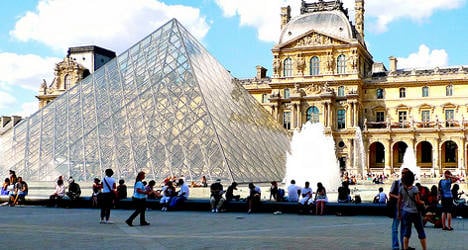The collections, currently stored underneath the museum, will be moved to a location managed by the Louvre in the city of Lens, in the Nord-Pas-de-Calais region of northern France, Culture Minister Aurelie Filippetti announced on Friday.
Speaking during France’s National Heritage Day, Filippetti said she had called on the culture ministry, the regional government of Nord-Pas-de-Calais, and the management of the Louvre to enact a “complete overhaul” of how the reserve collections were stored.
SEE ALSO: Calls for natural disaster aid as Seine floods
A spokesperson for the Louvre on Friday told The Local that of the museum’s roughly 460,000 works of art, only 35,000 were on public display, meaning a significant number of pieces could be at risk in the event of a flood.
For years, authorities in the French capital have been readying the city for a catastrophic deluge, reminiscent of the Great Flood of 1910.
VIDEO: Second victim swept to death in French floods
“Will we have a once-in-a-century flood? That’s for sure,” senior Paris official Serge Garrigues told Le Monde in March.
“The only question is when. A really big flood would last between 10 and 20 days, during which time we wouldn’t be able to do anything, except survive,” he added.
“And any return to normal couldn’t be expected before 45 days,” he said.
SEE ALSO: Lourdes clean up begins after 'disastrous' flood recedes
For his part, Eric Defertin, in charge of crisis management for the city of Paris, warned that “in principle, the streets of Paris are protected up to a [water] height of 8.62 metres, i.e. the same level as in 1910.”
Any more intense flooding than that, though, would place the inhabitants of the city of light in serious danger.
As a result, officials have devised an emergency plan of action, code-named Operation Evagglo, which was tested on December 6th after Parisien experts visited parts of the eastern United States hit by Hurricane Sandy in October.



 Please whitelist us to continue reading.
Please whitelist us to continue reading.
Member comments